Welcome to our blog on Wessex Pig facts! In this article, we will explore the facts world of Wessex pigs, their origin, size, physical characteristics, and the pros and cons of raising them. The Wessex Pig is a breed that originated in the West Country of England, specifically in Wiltshire and the New Forest area of Hampshire. These pigs are known for their distinctive size, coloration, and body shape. Join us as we uncover the unique traits and considerations associated with Wessex pigs, providing you with valuable insights into this remarkable breed.
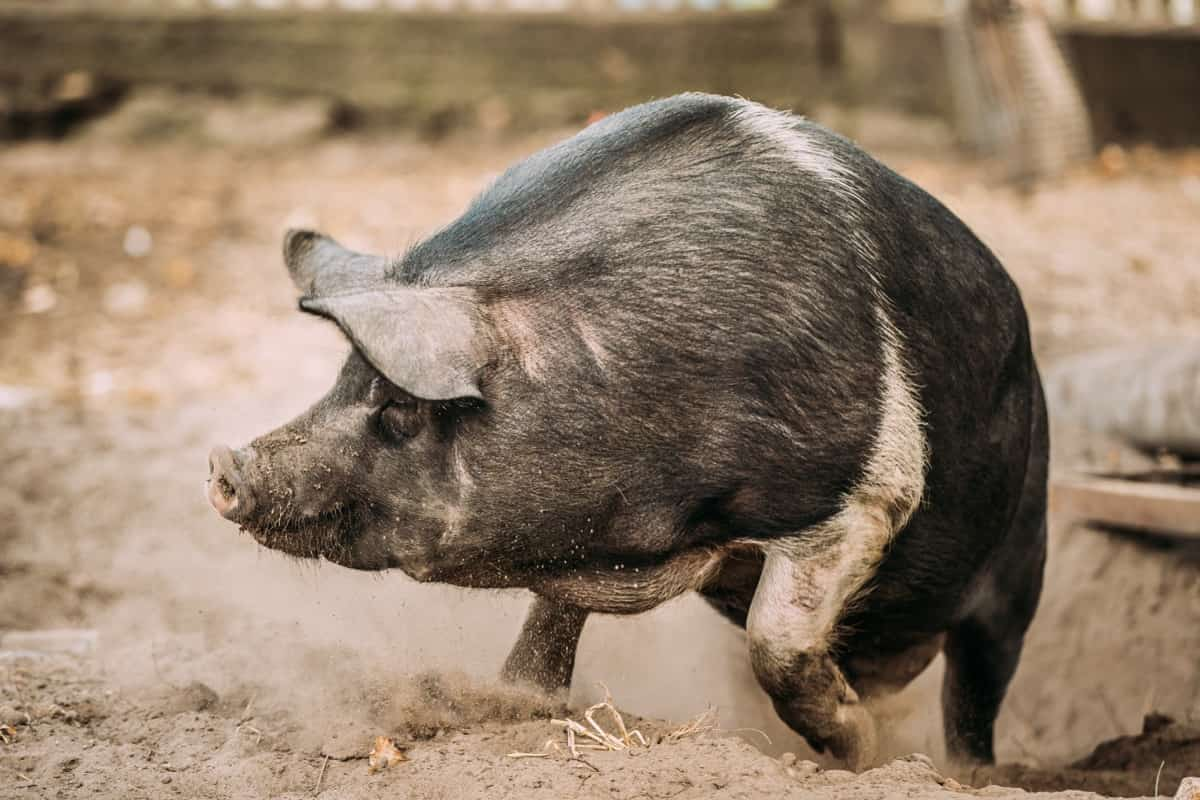
Wessex Pig Facts
Introduction to Wessex Pig
The Wessex Pig, also known as the Wessex Saddleback, is a type of pig originally from the West Country of England, specifically Wiltshire and the New Forest area in Hampshire. These pigs have a distinctive black color with white forequarters. In the UK, the Wessex Pig breed was combined with the Essex pig to create the British Saddleback, resulting in its extinction as a standalone breed in Britain. However, the Wessex Saddleback breed still exists in countries like Australia and New Zealand, where efforts have been made to preserve and maintain its population.
Origin of the Wessex Saddleback
- There are conflicting theories about the origin of the Wessex Saddleback.
- Some sources suggest it resulted from a cross between the black breed of the New Forest and the Old English Sheeted breed in the 18th century.
- However, others state that the breed’s true origin remains unknown.
- It is believed to be one of the few British pig breeds that remained relatively unaffected by crossing with Far Eastern “Neapolitan” pigs.
- The Wessex Saddleback breed society was established in 1918 in Britain.
- With the rise of intensive pig farming in the mid-20th century, the Wessex pigs’ suitability for extensive systems declined.
- Consequently, the breed’s population dwindled.
- In 1967, a merger occurred between the Wessex Saddleback and the Essex breed to prevent both from becoming extinct.
- This resulted in creation of a hybrid breed called the British Saddleback, often loosely referred to as the Wessex Saddleback in Britain.
In case you missed it: Australian Yorkshire Pig Facts: Origin, Size, Physical Characteristics, Pros, and Cons
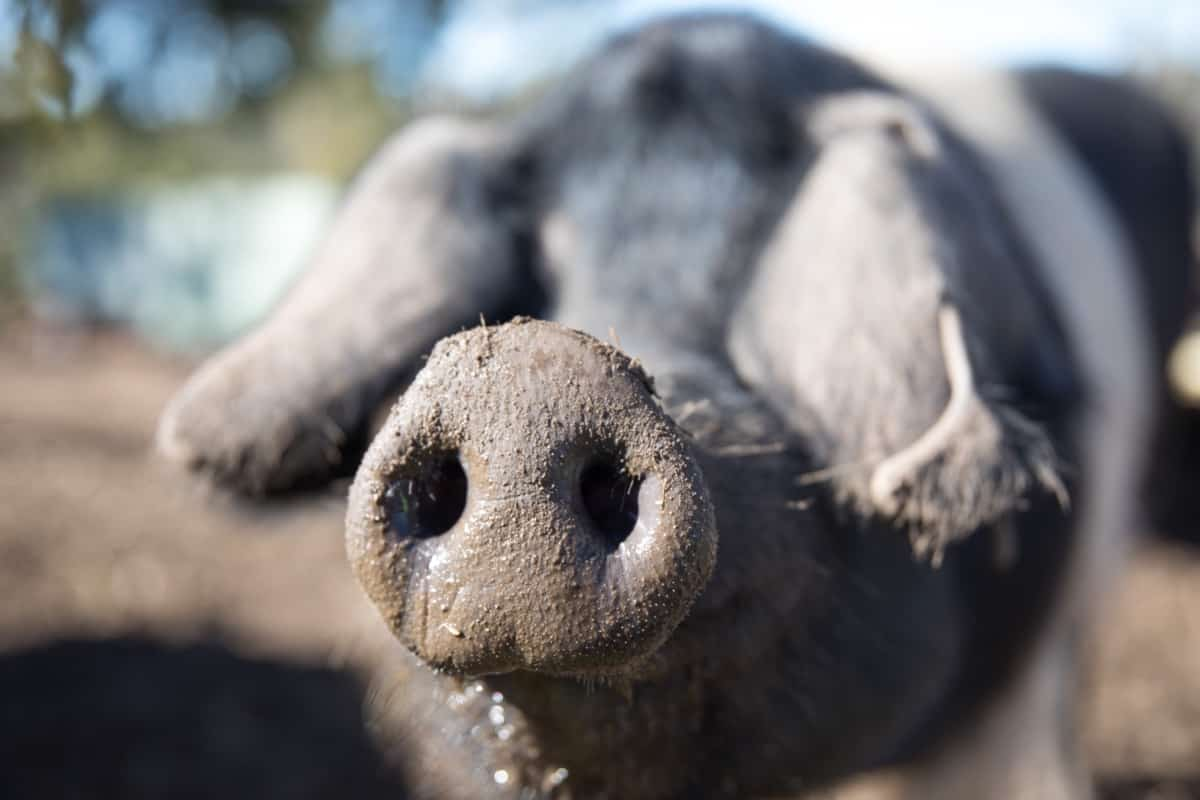
Survival and Current Status of Wessex Pigs
- Some Wessex Saddlebacks were exported to other parts of the world before the merger.
- Small populations of Wessex pigs still exist in Australia, New Zealand, and possibly other countries.
- There are fewer than 100 registered breeding sows in Australia, and the breed is considered critically endangered.
- Efforts are being made to revive the pure form of the Essex Pig breed in Britain.
- Although the Wessex Saddleback is currently considered extinct in its country of origin, its legacy lives on through its impact on the Hampshire pig breed, which originated from similar pigs exported to North America in the 19th century.
Size of Wessex Pigs: Average Weight and Height
Regarding the size of Wessex pigs, there are certain average weight and height ranges to consider. Mature Wessex boars, or male pigs, typically weigh between 600 to 700 pounds (272 to 318 kilograms). On the other hand, mature Wessex sows, or female pigs, generally weigh around 500 to 600 pounds (227 to 272 kilograms). Regarding height, Wessex pigs typically stand around 30 to 32 inches (76 to 81 centimeters) at the shoulder.
Physical Characteristics of Wessex Pigs: Color, Markings, and Body Shape
Color and Markings: The Wessex Saddleback is primarily black. It features a unique white band that encircles the forepart of the trunk. This white band extends from one forefoot over the shoulder to the other, resembling a saddle or “sheet.” The contrasting black and white coloration sets the Wessex Saddleback apart and makes it easily identifiable.
Body Shape: The Wessex Saddleback is characterized by its tall and rangy body shape. This breed has evolved to be well-suited for foraging in woodlands, which was its traditional use. The Wessex pigs’ physical structure allows them to navigate and thrive in wooded environments, utilizing their foraging instincts.
Woodland Foraging: The Wessex Saddleback’s traditional use as woodland foragers survived longest in the New Forest region. In the New Forest, pigs were historically allowed to roam and forage in the woods, feeding on mast such as acorns, beech nuts, and chestnuts. However, it’s important to note that the current pig population in the New Forest no longer includes purebred Wessex Saddlebacks.
Uses of Wessex Pig Facts
- Excellent Meat Quality: The Wessex pig is renowned for its delicious meat, making it highly sought after by meat enthusiasts and chefs alike. The meat is known for its marbling, tenderness, and exceptional flavor
- Traditional Use as a “Baconer”: Historically, the Wessex Saddleback was commonly raised as a “Baconer.” This means that it was specifically bred and grown to produce bacon and hams of superior quality.
In case you missed it: Auckland Island Pig Facts: Origin, Size, Physical Characteristics, Pros, and Cons
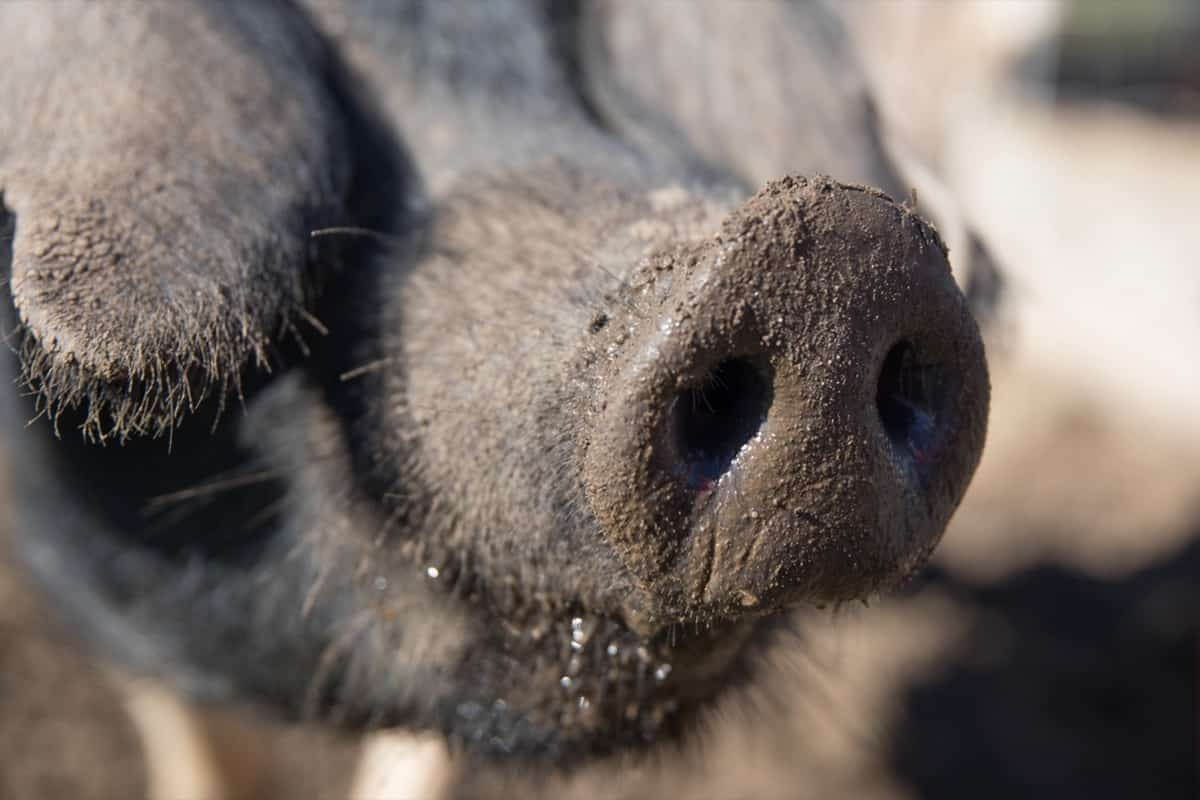
- Bacon and Ham Production: The Wessex pig’s meat is well-suited for bacon and ham production. The marbling in the meat contributes to the rich flavor and texture, making it a popular choice for these cured meat products.
- Culinary Versatility: The Wessex pig can be used in various culinary preparations due to its excellent meat quality. Its flavorful meat can be used for roasting, grilling, braising, or any other cooking method that highlights its natural taste and tenderness.
Benefits of Raising Wessex Pigs
- Hardy and Adapted to Outdoor Living: Wessex pigs are known for their hardiness and ability to adapt to outdoor living conditions. They are well-suited for extensive or free-range systems, thriving in various climates and environments.
- Efficient Foragers: Wessex pigs have a natural inclination for foraging and are excellent at utilizing pasture and woodland resources. They possess strong foraging instincts and can efficiently convert forage into meat, reducing feed costs.
- High-Quality Meat: Raising Wessex pigs can lead to the production of high-quality meat. The breed is valued for its well-marbled and flavorful meat, often sought after by chefs and consumers.
- Genetic Resilience: Wessex pigs have a genetic background relatively unaffected by extensive crossbreeding. This resilience contributes to their health, vitality, and ability to thrive in diverse farming systems.
- Preservation of Heritage Breed: By raising Wessex pigs, breeders contribute to preserving this unique heritage breed. Supporting the conservation of rare and traditional pig breeds helps maintain genetic diversity within the agricultural industry.
Drawbacks of Keeping Wessex Pigs as Livestock
- Large Space Requirements: Wessex pigs, being larger, require ample space for comfortable movement and foraging. Adequate land and pasture availability should be considered when keeping Wessex pigs.
- Potential Aggressiveness: Wessex pigs, like some other pig breeds, can exhibit aggression, especially during breeding or feeding times. Proper handling and management techniques are necessary to ensure safety and minimize conflicts.
- Intensive Management: While Wessex pigs are adaptable, they may require more intensive management than other pig breeds. Regular monitoring, health checks, and appropriate feeding strategies are essential for their well-being.
- Limited Availability: Due to their rarity, finding Wessex pig breeding stock or purebred individuals may take much work. This limited availability can hinder breeders or farmers from establishing a Wessex pig herd.
Distinctive Physical Features of Wessex Pigs
Wessex pigs, also known as Wessex Saddlebacks, possess several distinctive physical features that set them apart from other pig breeds.
- Medium-Sized Breed: Wessex pigs fall into the medium-sized category, making them a manageable choice for many farmers and breeders.
- Climate Adaptability: These pigs have a natural tolerance for the native climates of England, their country of origin. They can adapt well to varying weather conditions, displaying resilience in different environments.
- Eye-Catching Coat Color: The Wessex Saddleback’s coat color is predominantly black. A distinguishing feature is the white band that runs across the forepart of their trunk. This white band extends from one forefoot over the shoulder to the other, creating a striking visual contrast.
In case you missed it: Tamworth Pig Facts: Origin, Size, Physical Characteristics, Pros, and Cons
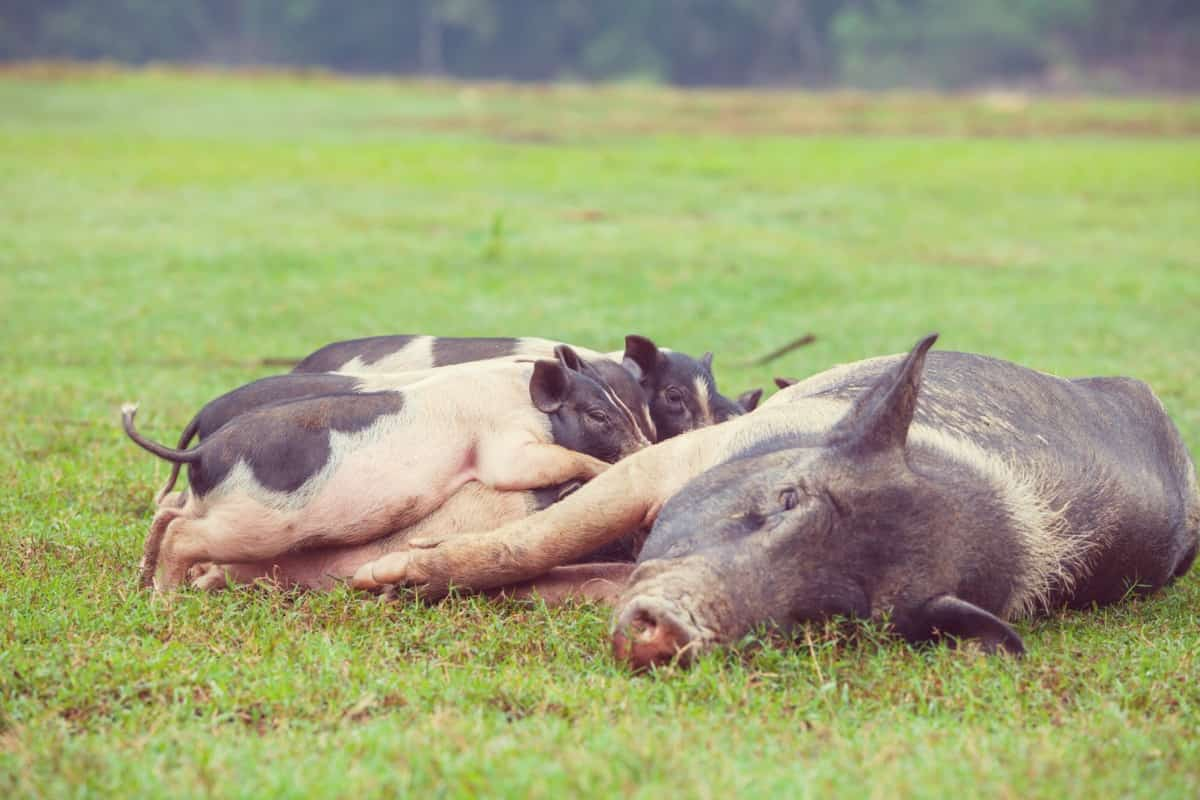
- Excellent Foragers: Wessex pigs possess exceptional foraging abilities. They excel in utilizing pasture resources and are skilled at finding food in woodland environments.
- Common Breed: The Wessex pig breed is not considered rare, with a relatively common presence in the farming community.
- Good Maternal Qualities: Wessex pigs are known for their good maternal instincts and qualities. They demonstrate excellent nurturing capabilities when raising their piglets.
Wessex Pigs Breed Traits and Temperament
- Docile Temperament: Wessex pigs are generally known for their docile and calm temperament. They are friendly and approachable, making them easier to handle and work with.
- Good Grazers and Foragers: Wessex pigs have a natural inclination for grazing and foraging. They are skilled at utilizing pasture and woodland resources to find food, showcasing their foraging abilities.
- Maternal Instincts: Wessex sows are known to possess excellent maternal instincts. They exhibit nurturing behavior towards their piglets and are attentive caregivers.
- Medium Growth Rate: Wessex pigs have a moderate growth rate compared to other pig breeds. This trait allows for the efficient utilization of resources while still achieving desirable market weight.
- Adaptable to Outdoor Systems: Wessex pigs are well-suited for outdoor systems such as extensive or free-range farming. They adapt well to diverse environments, including different climates and foraging conditions.
Wessex Pigs Growth Rate and Maturity
- Growth Rate: Wessex pigs have a moderate growth rate compared to other pig breeds. Their growth is steady and balanced, allowing for efficient utilization of feed resources.
- Maturity: Wessex boars typically reach maturity between 8 to 10 months of age. They have developed the physical characteristics necessary for breeding at this stage.
- Sow Maturity: Wessex sows generally reach maturity around 7 to 9 months. Once mature, they are capable of reproducing and raising litters of piglets.
- Market Weight: Wessex pigs can reach their optimal market weight within a reasonable timeframe. The exact weight will depend on various factors, such as feeding practices and desired market specifications.
In case you missed it: Kolbroek Pig Facts: Origin, Size, Physical Characteristics, Pros, and Cons
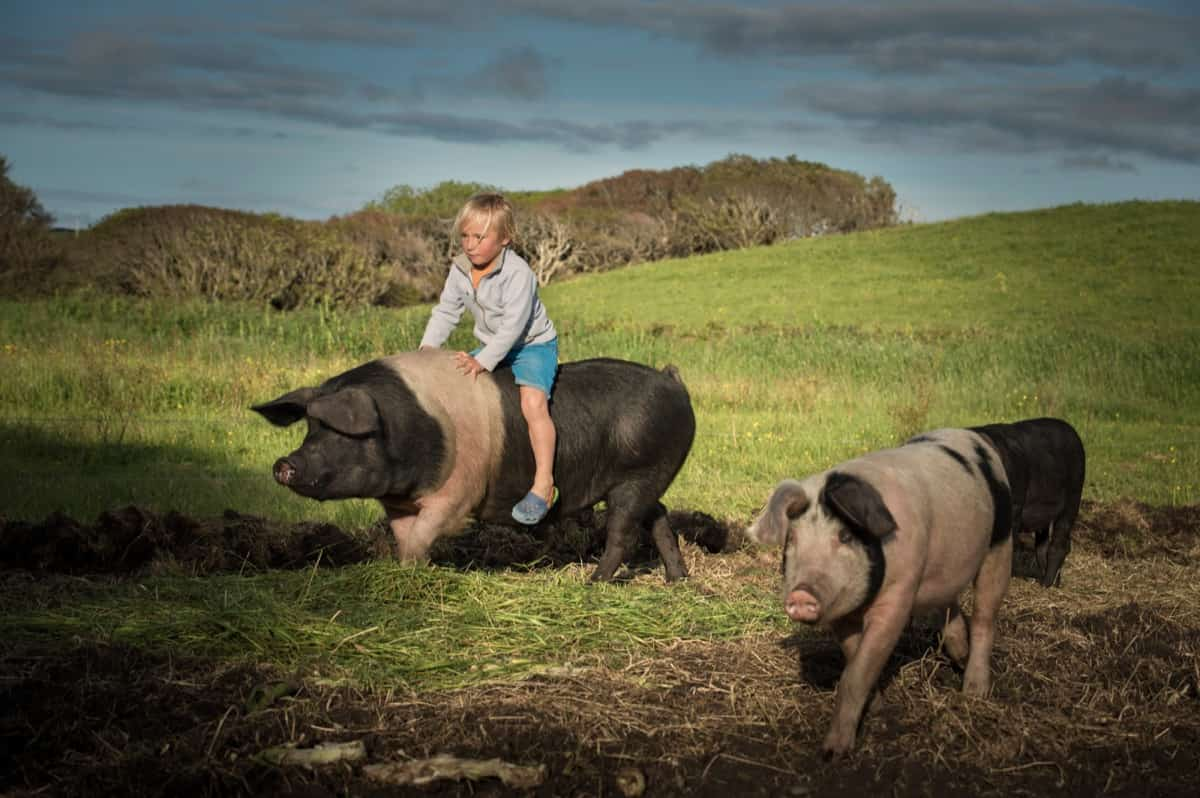
Wessex Pigs Breeding and Reproduction
- Breeding Age: Wessex boars can start breeding at 8 to 10 months. They reach sexual maturity at this stage and are capable of fertilizing sows.
- Sow Fertility: Wessex sows typically become fertile around 7 to 9 months of age. They enter estrus (heat) cycles, indicating their readiness for breeding.
- Breeding Process: Breeding Wessex pigs follow standard practices of natural mating or artificial insemination. Proper monitoring and observation are crucial during breeding to ensure successful mating.
- Gestation Period: The gestation period for Wessex pigs averages around 112 to 115 days. During this time, sows carry and nurture the developing piglets inside their womb.
- Litter Size: Wessex sows commonly produce 8 to 12 piglets. However, litter sizes may vary, influenced by genetics and nutrition.
- Maternal Care: Wessex sows exhibit excellent maternal instincts and provide attentive care to their piglets. They are nurturing mothers, ensuring the well-being and growth of their offspring.
Quick Facts for Wessex Pigs
- Wessex Saddleback is a breed of domestic pig originating in the West Country of England, especially in Wiltshire and the New Forest area of Hampshire.
- It is black with white forequarters, with a white band resembling a saddle.
- In Britain, it was merged with the Essex pig to form the British Saddleback, and the Wessex Saddleback breed is considered extinct in its country of origin.
- However, the breed survives in small numbers in Australia, New Zealand, and possibly other parts of the world.
- Wessex pigs are tall and rangy, well-adapted to foraging in woodland environments.
- The breed’s traditional use as a “baconer” makes it highly regarded for its excellent meat quality.
- Wessex Saddlebacks are known for their marbled, tender meat, making them ideal for bacon and ham production.
- The Wessex Saddleback breed society was established in 1918 in Britain but declined with the intensification of pig farming.
- Some Wessex Saddlebacks were exported to North America, where they contributed to the development of the Hampshire pig breed.
Conclusion
The Wessex Pig, originating in England, is a medium-sized breed known for its distinctive black coloration with a white saddle. It offers benefits such as hardiness and excellent meat quality, but potential drawbacks include its foraging tendencies and limited availability.
Note: The images presented in this post are intended solely for representation purposes. The images are meant to serve as visual aids and should not be relied upon as accurate representations of their real-life counterparts.
- Types of Pesticides Used in Agriculture: A Beginner’s Guide
- Economical Aquaculture: A Guide to Low-Budget Fish Farming
- 15 Common Planting Errors That Can Doom Your Fruit Trees
- How to Make Houseplants Bushy: Effective Tips and Ideas
- Innovative Strategies for Boosting Coconut Pollination and Yield
- Pollination Strategies for Maximum Pumpkin Yield
- The Complete Guide to Chicken Fattening: Strategies for Maximum Growth
- Natural Solutions for Tulip Problems: 100% Effective Remedies for Leaf and Bulb-Related Issues
- Revolutionizing Citrus Preservation: Towards a Healthier, Greener Future
- Natural Solutions for Peony Leaf and Flower Problems: 100% Effective Remedies
- Maximizing Profits with Avocado Contract Farming in India: A Comprehensive Guide
- Natural Solutions for Hydrangea Problems: 100% Effective Remedies for Leaf and Flowers
- The Ultimate Guide to Choosing the Perfect Foliage Friend: Bringing Life Indoors
- From Sunlight to Sustainability: 15 Ways to Use Solar Technology in Agriculture
- The Ultimate Guide to Dong Tao Chicken: Exploring from History to Raising
- The Eco-Friendly Makeover: How to Convert Your Unused Swimming Pool into a Fish Pond
- Mastering the Art of Delaware Chicken Farming: Essentials for Healthy Backyard Flocks
- 20 Best Homemade Fertilizers for Money Plant: DIY Recipes and Application Methods
- How to Craft a Comprehensive Free-Range Chicken Farming Business Plan
- Brighten Your Flock: Raising Easter Egger Chickens for Beauty and Bounty
- How to Optimize Your Poultry Egg Farm Business Plan with These Strategies
- Subsidy for Spirulina Cultivation: How Indian Government Schemes Encouraging Spirulina Farmers
- Ultimate Guide to Raising Dominique Chickens: Breeding, Feeding, Egg-Production, and Care
- Mastering the Art of Raising Jersey Giant Chickens: Care, Feeding, and More
- Ultimate Guide to Raising Legbar Chickens: Breeding, Farming Practices, Diet, Egg-Production
- How to Raise Welsummer Chickens: A Comprehensive Guide for Beginners
- How to Protect Indoor Plants in Winter: A Comprehensive Guide
- Ultimate Guide to Grow Bag Gardening: Tips, Tricks, and Planting Ideas for Urban Gardeners
- Guide to Lotus Cultivation: How to Propagate, Plant, Grow, Care, Cost, and Profit
- Agriculture Drone Subsidy Scheme: Government Kisan Subsidy, License, and How to Apply Online
- Ultimate Guide to Raising Araucana Chickens: Breed Profile, Farming Economics, Diet, and Care
- Bringing Hydroponics to Classroom: Importance, Benefits of Learning for School Students
- Ultimate Guide to Raising Polish Chickens: Breed Profile, Farming Economics, Diet, and Care
- Ultimate Guide to Raising Australorp Chickens: Profile, Farming Economics, Egg Production, Diet, and Care
- Silkie Chicken Farming: Raising Practices, Varieties, Egg Production, Diet, and Care
- Sussex Chicken Farming: Raising Practices, Varieties, Egg Production, Diet and Care